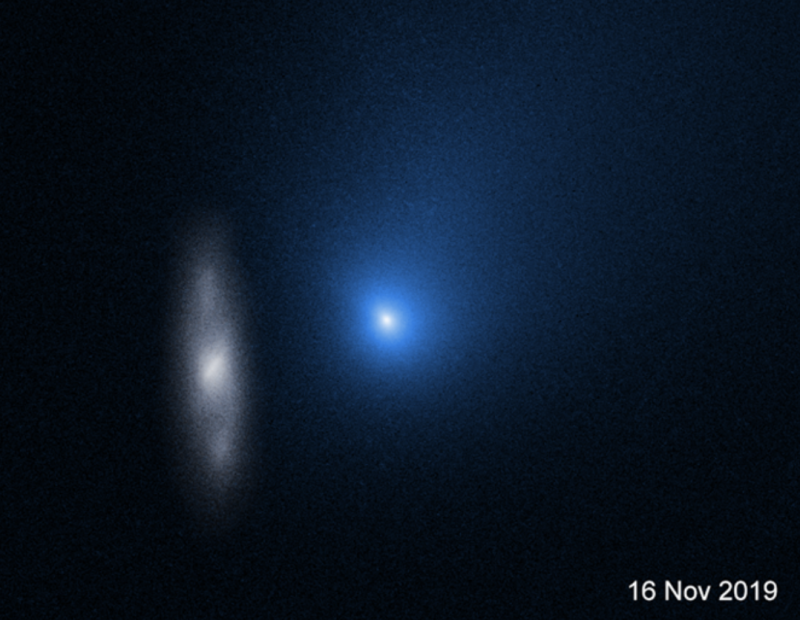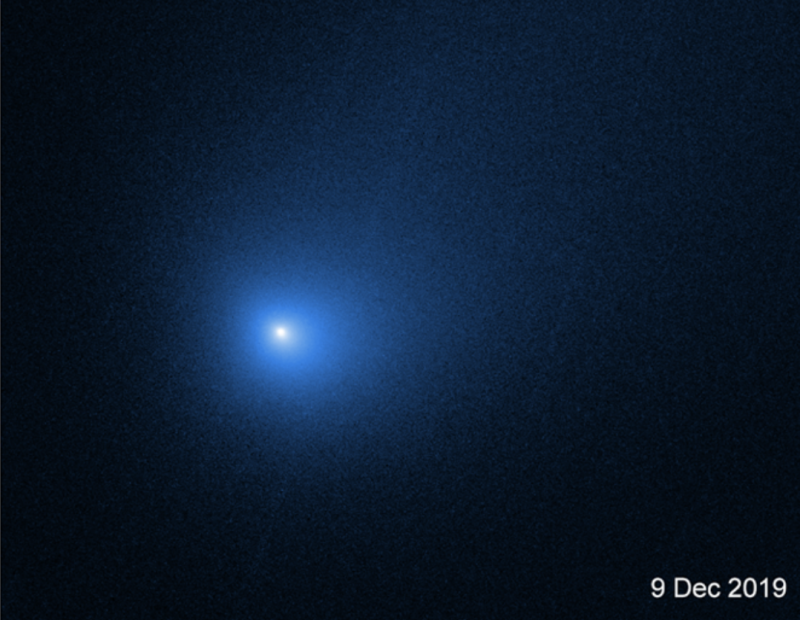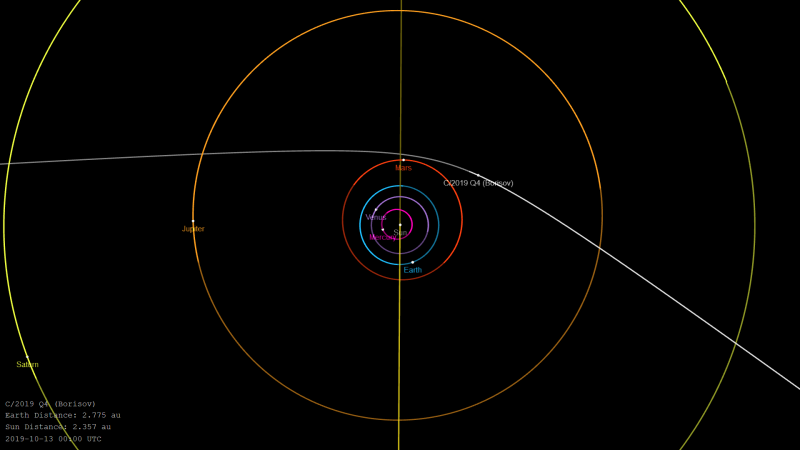
Astronomers last week (December 12, 2019) released new Hubble Space Telescope images of 2I/Borisov – the second-known interstellar object – shortly before and shortly after its December 8 perihelion. Those images are historic in and of themselves; we’ve never before witnessed an interstellar object sweeping closest to our sun. 2I/Borisov – discovered on August 30, 2019, by comet hunter Gennady Borisov in Crimea, and now characterized as a comet – was about twice as far as Earth from the sun at its closest, on the inner edge of the asteroid belt between Mars and Jupiter. So its December 8 passage nearest our sun wasn’t a close passage for a comet. But – since comets are most active when they sweep closest to a star – astronomers hoped to see 2I/Borisov exhibit an outburst or other activity.
We haven’t heard of any outbursts from 2I/Borisov, but the Hubble observations did yield important science. Astronomer David Jewitt of UCLA led the team that captured the new images. Jewitt said in a statement:
Hubble gives us the best upper limit of the size of comet Borisov’s nucleus [core], which is the really important part of the comet.
Surprisingly, our Hubble images show that its nucleus is more than 15 times smaller than earlier investigations suggested it might be. Our Hubble images show that the radius is smaller than half-a-kilometer [.3 miles].
Knowing the size is potentially useful for beginning to estimate how common such objects might be in the solar system and our galaxy. Borisov is the first known interstellar comet, and we would like to learn how many others there are.
EarthSky 2020 lunar calendars are available! They make great gifts. Order now. Going fast!

Let’s back up a minute. What is 2I/Borisov? We’ve said it’s the second interstellar visitor and the first known interstellar comet. That is, it’s a comet from another star system. The first interstellar object was spotted by astronomers in Hawaii in late 2017. Earthly astronomers named it 1I/’Oumuamua (“Scout”). The 1I stands for 1st interstellar.
‘Oumuamua was positively identified as coming from beyond our solar system. The shape of its orbit told that story. But it couldn’t be positively identified as a comet, despite the fact that – because they’re only loosely bound to their own stars – comets are the most likely candidates for becoming interstellar objects. ‘Oumuamua, though, was a strange object – long and thin – and didn’t show any signs of outgassing or a tail. It looked in many ways more like an asteroid than a comet.
Plus it had already passed its perihelion when astronomers first spotted it. It was already heading outward, back out of our solar system again.
So seeing the second-known interstellar object – 2I/Borisov – both before and after perihelion was a big plus for astronomers!
And now both 1I/’Oumuamua and 2I/Borisov are heading outward again. By the middle of 2020, 2I/Borisov will have zoomed past Jupiter’s distance of 500 million miles (800 million km) on its way back to interstellar space.
But, never fear – now that they’ve spotted the first two interstellar objects – astronomers expect to find more.

Bottom line: Astronomers used the Hubble Space Telescope to obtain images of 2I/Borisov – the second known interstellar object – before and after its December 8, 2019, perihelion, or closest point to the sun.











